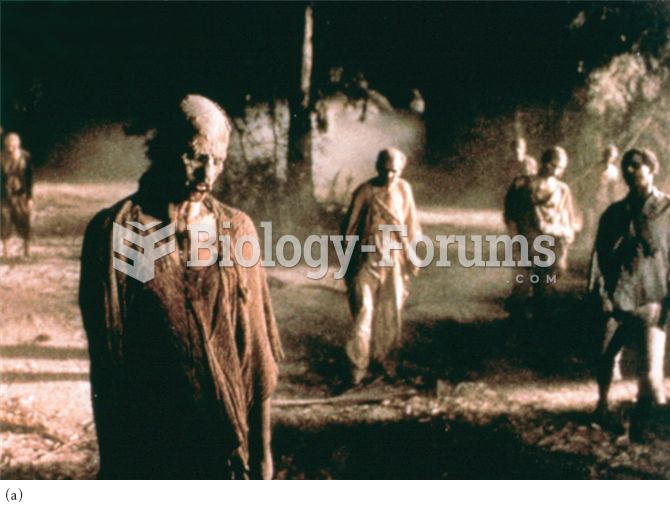Answer to Question 1
- In the final revelation, God shows Mrs. Turpin exactly who she is: just another sinner, whose pride in her virtues must perish in eternal light. For her, the hard road toward sainthood lies ahead.
Even the hogs are fat with meanings. They resemble Mrs. Turpin, who is overweight, with eyes small and fierce, and whom Mary Grace calls a wart hog. In her perplexity, Mrs. Turpin is herself like the old sow she blinds with the hose. Her thoughts about pigs resemble her thoughts on the structure of society, creating a hierarchy of pigs with a pig astronaut at the top, writes Josephine Hendin in
The World of Flannery OConnor (Bloomington: Indiana UP, 1970).
Mrs. Turpin gazes into her pig parlor as if through the very heart of mystery. As darkness draws nearand the moment of ultimate revelationthe pigs are suffused with a red glow. Contemplating them, Mrs. Turpin seems to absorb some abysmal life-giving knowledge. What is this knowledge? Glowing pigs suggest, perhaps, the resurrection of the body. As Sister Kathleen Feeley says in her excellent discussion of this story, Natural virtue does as much for fallen men as parlor treatment does for pigs: it does not change their intrinsic nature. Only one thing can change man: his participation in the grace of Redemption (
Flannery OConnor: Voice of the Peacock New Brunswick: Rutgers UP, 1972).
We would be remiss not to comment that OConnor herself would not have appreciated this question about theme. In Writing Short Stories OConnor commented:
People talk about the theme of a story as if the theme were like the string that a sack of chicken feed is tied with. They think that if you can pick out the theme, the way you pick the right thread in the chicken-feed sack, you can rip the story open and feed the chickens. But this is not the way meaning works in fiction. . . . A story is a way to say something that cant be said any other way, and it takes every word in the story to say what the meaning is. (
Mystery and Manners: Occasional Prose, edited by Sally and Robert Fitzgerald New York: Farrar, 1980.)
In a classroom, we obviously sometimes find it useful to decide upon a storys main ideas. But meaning radiates beyond these conclusions. You might ask students about some of the meanings in Revelation that we could miss focusing on theme.
Joyce Carol Oates, in a comment on Revelation, finds the story intensely personal. Mary Grace is one of those misfitspathetic, overeducated, physically unattractive girls like Joy/Hulga of Good Country Peopleof whom the author is especially fond. That OConnor identifies with these girls is obvious; it is she, through Mary Grace, who throws that textbook on human development at all of us, striking us in the foreheads, hopefully to bring about a change in our lives (The Visionary Art of Flannery OConnor, in
New Heaven, New Earth New York: Vanguard, 1974). In a survey of fiction, Josephine Hendin also stresses OConnors feelings of kinship for Mary Grace. As the daughter of a genteel family who wrote distinctly ungenteel books, OConnor saw herself as an outsider: She covered her anger with politeness and wrote about people who did the same. In Revelation, Mary Graces hurling the book is an act of violence against her mother, for whom Mrs. Turpin serves as a convenient stand-in (Experimental Fiction,
Harvard Guide to Contemporary Writing Cambridge: Harvard UP, 1979).
At least one African American student has reacted angrily to Revelation, calling it the most disgusting story Ive ever read and objecting to the constant repetition of the word
nigger. This is a volatile issue and involves a genuine concern. If possible, the matter should be seriously addressed in class rather than ignored or brushed aside. No one would assume that because
Othello depicts several murders, it therefore endorses murder, but some students will take the occurrence of racial epithets in a story as proof of racism on the part of the author. Thus, you might begin by pointing outor better, lead the students to point outthat while the word appears frequently in the dialogue and in Mrs. Turpins interior monologues, OConnor does not employ it when speaking in her own voice: her depiction of the reflexive racism of her characters does not constitute an endorsement of racism. The use and repetition of the word
nigger will inevitably create an uncomfortable atmosphere in class and may upset students; such usage is to be found in much literature of the past, as witness the constant controversy over
Huckleberry Finn. But literature must be given the scope to tell the truth about human experience including its uglier manifestations, however painful the truth may sometimes be. We cannot properly come to terms with the endemic racism of Americas past (and present) by euphemising it out of our collective memory. It seems rather ironic, to say the least, that we should insistquite rightlythat our culture is profoundly racist and at the same time seek to suppress classic works of literature for their accurate depiction of that racism.
Answer to Question 2
- Like the handwriting on the wall, Mary Graces utterance is baffling and mysterious. Sorely troubled, Mrs. Turpin turns it over and over in her mind all afternoon. She knows from Whom the message came: What do you send me a message like that for? (par. 179), and her impulse is to defend herself, to argue back at God.
OConnor herself wrote in a letter to a friend, I like Mrs. Turpin as well as Mary Grace. Youve got to be a very big woman to shout at the Lord across a hogpen. Shes a country female Jacob. And that vision is purgatorial (Letter to Maryat Lee, May 15, 1964,
The Habit of Being: Letters of Flannery OConnor, ed. Sally Fitzgerald New York: Farrar, 1979 577).
That Mrs. Turpin is a country female Jacoba reference to the Old Testament patriarch who famously wrestled with Godis evident from the storys end. Her irate challenge to the Almighty, Who do you think you are? is exactly the question God is asking her. God replies immediately: He is Lord of all creation, whose natural world burned for a moment with a transparent intensity (par. 188). He is the giver of life and of death, as Mrs. Turpin realizes when she sees Clauds truck, whose driver and passengers at any moment could be destroyed.
 (a) Zombies are a common theme in movies. However, (b) the number of zombie movies released each yea
(a) Zombies are a common theme in movies. However, (b) the number of zombie movies released each yea
 Plasma protein binding and drug availability: (a) drug exists in a free state or bound to plasma pro
Plasma protein binding and drug availability: (a) drug exists in a free state or bound to plasma pro





